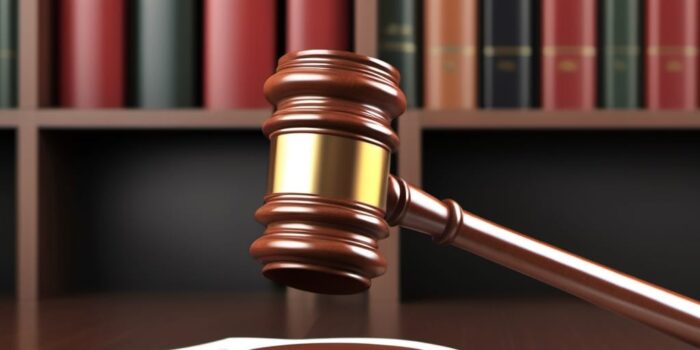Economic damages, also known as compensatory damages, are a type of monetary award granted to a plaintiff in a legal case. These damages are intended to compensate the plaintiff for actual, quantifiable losses incurred as a result of the defendant’s actions. Economic damages can cover a wide range of losses, including medical expenses, loss of earnings, property damage, and other out-of-pocket expenses.
Understanding economic damages is crucial for both plaintiffs and defendants in a legal case. For plaintiffs, it’s important to accurately calculate and present these damages to ensure full compensation. For defendants, understanding economic damages can help in formulating a defense strategy and potentially negotiating a settlement.
Types of Economic Damages
Economic damages can be broadly categorized into two types: Special Damages and General Damages. Special Damages refer to the financial losses that can be easily quantified and proven, such as medical bills and lost wages. On the other hand, General Damages are non-economic losses that are more subjective and harder to quantify, such as pain and suffering, emotional distress, and loss of consortium.
It’s important to note that while both types of damages are considered economic damages, they are calculated and awarded differently. Special Damages are usually straightforward and based on actual financial losses, while General Damages require a more subjective evaluation and are often determined by a jury.
Special Damages
Special Damages, also known as actual damages, are the most common type of economic damages. These damages are intended to compensate the plaintiff for actual, quantifiable financial losses incurred as a result of the defendant’s actions. This can include medical expenses, lost wages, property damage, and other out-of-pocket expenses.
The key characteristic of Special Damages is that they can be easily quantified and proven. For example, medical expenses can be proven with medical bills, lost wages can be proven with pay stubs or tax returns, and property damage can be proven with repair estimates or receipts.
General Damages
General Damages, on the other hand, are intended to compensate the plaintiff for non-economic losses that are more subjective and harder to quantify. This can include pain and suffering, emotional distress, loss of consortium, and loss of enjoyment of life.
Unlike Special Damages, General Damages are not based on actual financial losses. Instead, they are determined by a jury based on the evidence presented in the case. This can include testimony from the plaintiff and witnesses, medical records, and expert testimony.
Calculating Economic Damages
Calculating economic damages can be a complex process that requires a thorough understanding of the law, finance, and economics. It involves determining the actual financial losses incurred by the plaintiff, as well as projecting future losses.
The calculation of economic damages typically involves the following steps: identifying the types of losses, quantifying the losses, determining the cause of the losses, and calculating the present value of future losses.
Identifying the Types of Losses
The first step in calculating economic damages is to identify the types of losses incurred by the plaintiff. This can include medical expenses, lost wages, property damage, and other out-of-pocket expenses. It’s important to consider all potential sources of loss, as failing to do so can result in an underestimation of damages.
Once the types of losses have been identified, the next step is to gather evidence to support these losses. This can include medical bills, pay stubs, tax returns, repair estimates, and receipts.
Quantifying the Losses
The next step in calculating economic damages is to quantify the losses. This involves determining the actual financial losses incurred by the plaintiff, as well as projecting future losses. The calculation of future losses can be complex and often requires the assistance of an economic expert.
When quantifying losses, it’s important to consider both past and future losses. Past losses are usually straightforward and based on actual financial losses, while future losses require a more subjective evaluation and are often determined by an economic expert.
Presenting Economic Damages in Court
Presenting economic damages in court is a critical part of a plaintiff’s case. It involves presenting evidence to support the claim for damages, as well as arguing for the maximum possible award.
The presentation of economic damages typically involves the following steps: presenting the evidence, explaining the calculation of damages, and arguing for the maximum possible award.
Presenting the Evidence
The first step in presenting economic damages in court is to present the evidence. This involves presenting the documents and testimony that support the claim for damages. This can include medical bills, pay stubs, tax returns, repair estimates, and receipts, as well as testimony from the plaintiff and witnesses.
It’s important to present the evidence in a clear and organized manner, as this can help the jury understand the basis for the claim for damages. It’s also important to present the evidence in a persuasive manner, as this can help convince the jury of the validity of the claim.
Explaining the Calculation of Damages
The next step in presenting economic damages in court is to explain the calculation of damages. This involves explaining how the damages were calculated, including the identification of losses, the quantification of losses, the determination of the cause of the losses, and the calculation of the present value of future losses.
Explaining the calculation of damages can be complex and often requires the assistance of an economic expert. The expert can provide testimony on the methodology used to calculate the damages, as well as the assumptions and projections used in the calculation.
Challenges in Proving Economic Damages
Proving economic damages can be a challenging task. It requires a thorough understanding of the law, finance, and economics, as well as the ability to present complex financial information in a clear and persuasive manner.
Some of the challenges in proving economic damages include the following: proving the cause of the losses, quantifying the losses, projecting future losses, and overcoming defenses to damages.
Proving the Cause of the Losses
One of the main challenges in proving economic damages is proving the cause of the losses. This involves proving that the defendant’s actions were the direct cause of the plaintiff’s financial losses. This can be a complex task that often requires the assistance of an expert witness.
Proving the cause of the losses can be particularly challenging in cases where the plaintiff has pre-existing conditions or other potential sources of loss. In such cases, the defendant may argue that the losses were caused by factors other than the defendant’s actions.
Quantifying the Losses
Another challenge in proving economic damages is quantifying the losses. This involves determining the actual financial losses incurred by the plaintiff, as well as projecting future losses. The calculation of future losses can be particularly challenging, as it requires making assumptions and projections about future events.
Quantifying the losses can also be challenging in cases where the plaintiff has non-economic losses, such as pain and suffering, emotional distress, and loss of consortium. In such cases, the plaintiff must present evidence to support these losses and convince the jury of their validity.
Conclusion
Understanding economic damages is crucial for both plaintiffs and defendants in a legal case. These damages are intended to compensate the plaintiff for actual, quantifiable losses incurred as a result of the defendant’s actions. Understanding the types of economic damages, how they are calculated, and how they are presented in court can help both parties in a legal case.
However, proving economic damages can be a challenging task. It requires a thorough understanding of the law, finance, and economics, as well as the ability to present complex financial information in a clear and persuasive manner. Despite these challenges, economic damages play a critical role in ensuring that plaintiffs are fully compensated for their losses.
Start Your Journey to Fair Compensation with Clear Legal
If you’re seeking to understand and claim the economic damages you rightfully deserve, Clear Legal is here to guide you through the process with integrity, innovation, and quality. Our commitment to these core values ensures that every client receives personalized attention and expert legal advice. Don’t navigate the complexities of economic damages alone. Request a free consultation today and take the first step towards securing the compensation you need to move forward.





